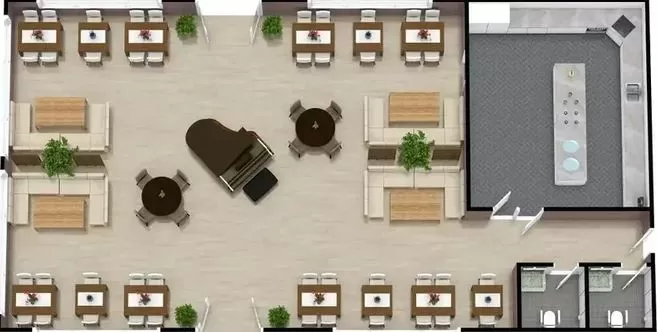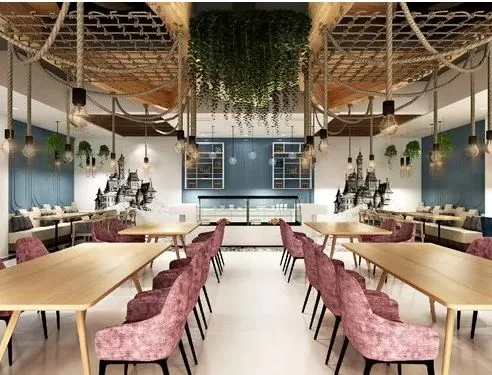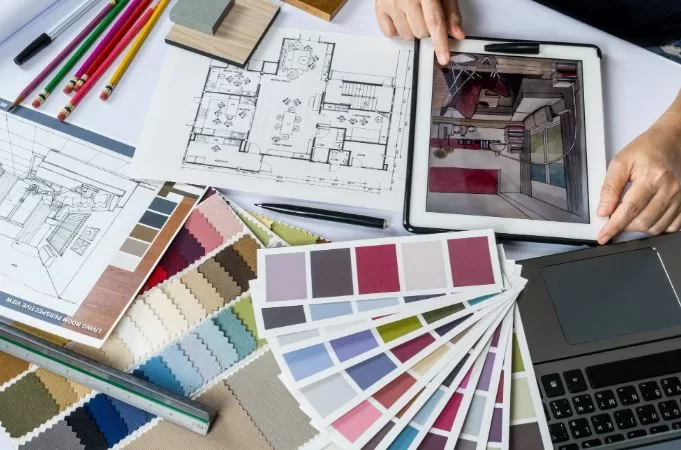A restaurant interior designer plays a crucial role in shaping the ambiance, functionality, and overall experience of a dining establishment. They combine creativity, technical knowledge, and a deep understanding of hospitality trends to transform a space into a cohesive environment that enhances both the customer’s experience and the operational efficiency of the restaurant. The restaurant interior designer is responsible for much more than just aesthetics; they must balance form and function to create a welcoming, comfortable, and efficient space that aligns with the restaurant’s brand, concept, and customer needs.

1. Role of a Restaurant Interior Designer
-
A restaurant interior designer is tasked with translating a restaurant’s concept into a physical environment that reflects its brand identity, appeals to its target audience, and meets the functional requirements of running a food service business. Their work encompasses a wide range of responsibilities, including space planning, selecting materials, choosing furniture, coordinating lighting, and even influencing the layout of the kitchen and other operational spaces.
1.1. Creative Vision
The designer must first develop a creative vision that matches the restaurant’s concept, whether it’s fine dining, casual, fast-casual, or something more niche like a themed restaurant. This vision guides all design decisions, from the color scheme and furniture to the textures, finishes, and decorative elements used throughout the space.
1.2. Balancing Aesthetics and Functionality
A restaurant’s design must be beautiful, but it also needs to be practical. The designer must ensure that the layout allows for smooth traffic flow, efficient service, and a comfortable dining experience. This requires collaboration with architects, kitchen designers, and restaurant owners to ensure that the space functions efficiently for both customers and staff.
1.3. Customer Experience
The interior designer’s work is central to creating an atmosphere that enhances the dining experience. Every design choice, from the seating arrangements to the lighting and acoustics, affects how customers perceive the restaurant and how they feel during their visit. A well-designed restaurant encourages customers to linger, enjoy their meal, and return.

2. Steps in Designing a Restaurant Interior
-
Designing a restaurant is a multi-stage process that involves careful planning, creativity, and attention to detail. Below are the key steps a restaurant interior designer typically follows:
2.1. Understanding the Concept and Brand
The first step for any interior designer is to understand the restaurant’s concept and brand. This includes identifying the type of cuisine, the target audience, the desired ambiance, and the restaurant’s core values. A fast-casual restaurant serving young professionals will have a very different design from a high-end, romantic dining establishment.
The designer will also need to consider the brand’s identity and how to reflect it in the design. For example, an eco-friendly, farm-to-table restaurant might prioritize natural materials like wood and stone, while a modern, minimalist restaurant might use sleek lines, neutral colors, and metallic finishes.
2.2. Space Planning
Once the concept is clear, the designer moves on to space planning. This involves creating a layout that divides the space into functional zones: the dining area, kitchen, restrooms, bar (if applicable), waiting areas, and service stations. The goal of space planning is to optimize the flow of traffic for both customers and staff, ensuring that the kitchen and dining areas are well-connected without causing disruptions.
Good space planning ensures that the restaurant’s seating capacity is maximized while maintaining a comfortable environment for diners. It also allows for smooth movement of staff between the kitchen, service areas, and dining rooms.
2.3. Selecting Materials and Finishes
The choice of materials and finishes is critical to setting the tone of the restaurant. Interior designers carefully select materials that align with the restaurant’s concept while also being durable and easy to maintain. For example, a high-end restaurant may feature marble countertops and leather seating, while a casual café might opt for wooden tables and vibrant, easy-to-clean upholstery.
Designers also consider the practicality of the materials they choose. In high-traffic areas, durable flooring such as tile, hardwood, or vinyl may be preferred. In the dining area, surfaces must be resistant to stains, scratches, and spills to ensure that the restaurant can maintain a clean and polished look with minimal upkeep.
2.4. Furniture and Seating Arrangements
Furniture selection is an essential aspect of restaurant interior design. The designer chooses chairs, tables, and booths that not only fit the aesthetic but also offer comfort and durability. The size and arrangement of tables should reflect the service style and customer expectations. For instance:
- Fine dining restaurants often feature plush seating with large, well-spaced tables to create an intimate, luxurious atmosphere.
- Casual eateries may opt for smaller, more functional tables with a focus on maximizing seating capacity.
The arrangement of furniture should allow for efficient circulation and ensure that guests have adequate space for comfort without feeling overcrowded.
2.5. Lighting Design
Lighting is one of the most important elements in creating the right ambiance in a restaurant. Designers use a combination of ambient, task, and accent lighting to create mood, highlight key areas, and provide sufficient light for diners to comfortably see their food.
- Ambient Lighting: Sets the overall tone of the restaurant, often through ceiling fixtures or wall sconces. The goal is to create a warm, welcoming atmosphere.
- Task Lighting: Focuses on specific areas, such as the kitchen or bar, where functionality is key.
- Accent Lighting: Highlights design features like artwork, architectural details, or the bar area, adding visual interest and enhancing the restaurant’s theme.
2.6. Color Schemes
Color is a powerful tool in influencing the perception and mood of a space. Restaurant interior designers carefully choose color schemes that align with the restaurant’s concept. For example:
- Warm colors like red, orange, and yellow can stimulate appetite and create a cozy, energetic environment.
- Cool colors like blue and green are more calming and are often used in upscale or health-conscious restaurants.
Neutral tones can be used as a backdrop to emphasize the food and other design elements, while bold accents might be employed to add vibrancy to the space.
2.7. Acoustics
Acoustics are often overlooked but play a significant role in the dining experience. A restaurant that is too noisy can make conversation difficult, while a space that is too quiet may feel uncomfortable. Designers use materials like upholstered furniture, rugs, curtains, or acoustic panels to control sound levels and create a pleasant environment for conversation.
2.8. Decor and Accessories
The final touches in a restaurant interior design are the decorative elements that bring the space to life. Artwork, plants, decorative lighting fixtures, and other accessories should reflect the restaurant’s brand and theme. These elements add personality and can make the restaurant more memorable and visually appealing.

3. The Importance of Restaurant Interior Design
-
Restaurant interior design is critical to a restaurant’s success. A well-designed space enhances the customer experience, encourages repeat visits, and can even influence how customers perceive the food and service. Poor design, on the other hand, can detract from the dining experience, even if the food is excellent.
3.1. First Impressions
A restaurant’s interior is the first thing customers notice when they walk in. A well-designed entrance and reception area set the tone for the rest of the experience. If the design is inviting and reflective of the restaurant’s brand, it can create a positive first impression that enhances the entire dining experience.
3.2. Customer Retention
An appealing and comfortable restaurant environment encourages customers to return. Thoughtful design elements—whether it’s comfortable seating, a pleasant atmosphere, or a visually interesting space—can make customers want to come back and recommend the restaurant to others.
3.3. Operational Efficiency
Good design also supports the restaurant’s operational efficiency. By optimizing the layout and space planning, designers ensure that the staff can work efficiently and that the restaurant can accommodate the maximum number of customers without compromising comfort.

conclusion
A restaurant interior designer plays a pivotal role in shaping the dining experience. From conceptualizing the design to selecting materials, furniture, and lighting, their work impacts how customers perceive the restaurant and how efficiently it operates. A successful restaurant interior design blends aesthetics, functionality, and brand identity to create an inviting, comfortable, and memorable space for diners.
About Author sudeshna mukherjee
You May Also Like…
The Ultimate Guide to Hiring a Consultant Chef
Introduction Food trucks or mobile food trucks is an idea that has arrived. But, there is a issues with food safety in...
Food Safety Essentials: Addressing 5 Common Problems in Food Trucks
Introduction Food trucks or mobile food trucks is an idea that has arrived. But, there is a issues with food safety in...



